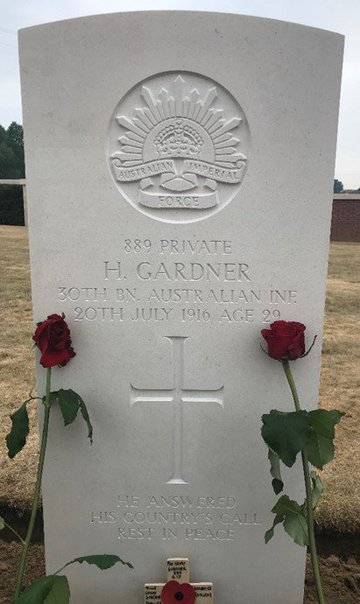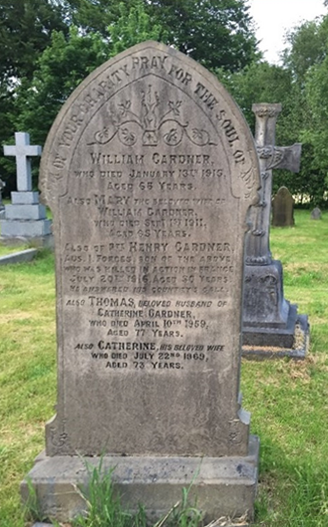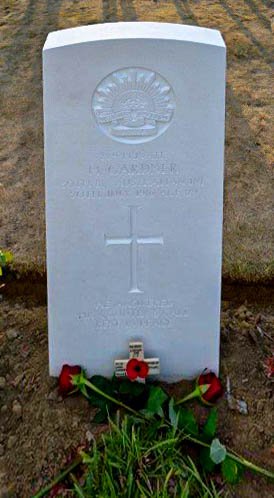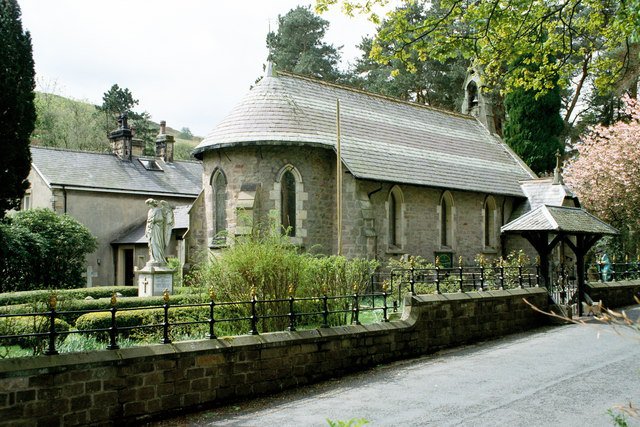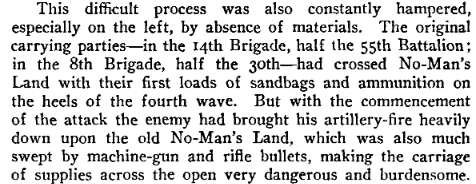Henry GARDNER
Eyes brown, Hair dark, Complexion dark
Finding Henry more than a century later
By 2016, Henry had still not been identified but my sister, Christine, and I, travelled with our husbands, family members and friends to Fromelles for the Centenary commemorations. For us it was only a short journey to Northern France compared to the thousands of miles travelled by Australian researcher, Ann and her husband, Kevin, plus members of the Fromelles Association. It was wonderful to meet Ann and Kevin in Lille the night before the ceremony and to show her the photos of where Henry lived as a young boy and of his sister, Elizabeth.
The actual ceremony, the next day, was a wonderful and poignant experience. The Australian Army were so hospitable, and the service was beautiful. We visited the Museum in the village which was a testament to all the work, research and dedication undertaken by the Army, the Fromelles Association and the villagers, including Pierre Seillier who talked to us about his local research. At that time, we were hoping that our family DNA donations would help identify Henry so that we too could name his grave.
This came about two years later. A phone call from Major Wilson late in the evening confirmed Henry’s identification. What an emotional moment! It is wonderful to think that so many people are committed to an event that happened over a hundred years ago.
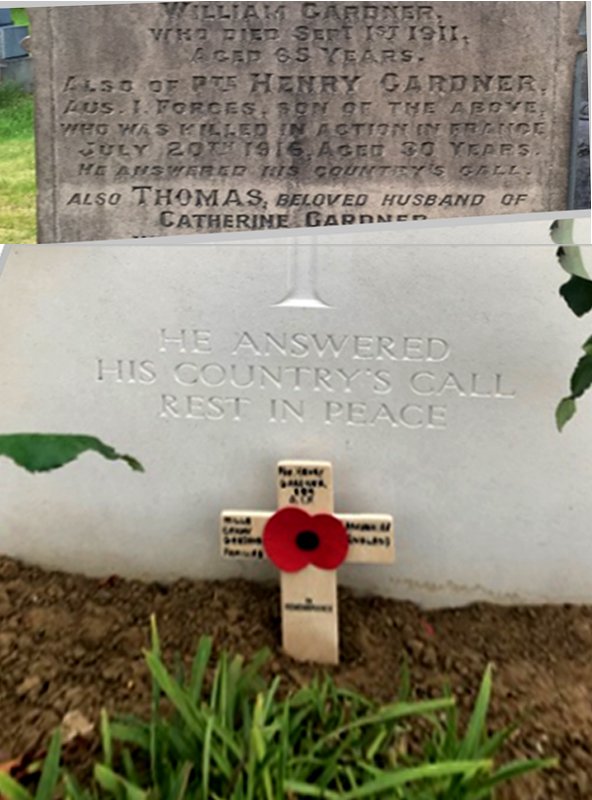
Top - The Gardner family headstone in Lancashire.
Bottom - The inscription on Henry’s headstone at Fromelles, France.
When the Australian Army asked the family to choose an inscription for Henry’s gravestone in Fromelles we decided on ‘he answered his country’s call’. This was the inscription for Henry on his parent’s gravestone in the cemetery at St. Mary and St John the Baptist RC church, Pleasington, near Blackburn, Lancashire, England.
The rededication ceremony in July 2018 at the Pheasant Wood cemetery in Fromelles was a wonderful experience. Seeing Henry’s name and inscription on his gravestone is testament to everyone involved and the culmination of many years of work that began so long ago with Lambis Englezos.
After the ceremony we were able to meet with the children of the Cobbers School, Fromelles who took part in the ceremony by leading my sister and I down to the grave and placing roses there. It was a very poignant time. They were such enthusiastic children and genuinely interested in the whole process, with an incredibly unique relationship with Australia.
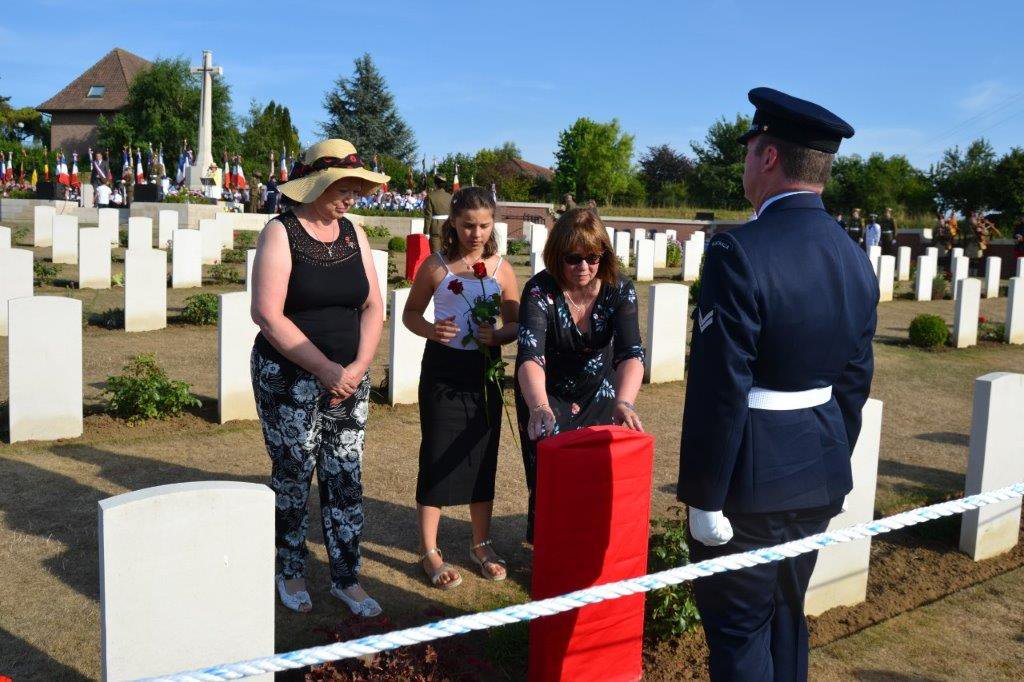
Henry’s family are so grateful to The Fromelles Association of Australia and the Australian Army as they continue their incredibly dedicated work to put the soldiers from the mass graves to rest.
When Sue met Henry: a mystery a century in the making
The story of Henry Gardner was contributed by family member, Sue Mills, based on her own experience and research together with the work of Fromelles Association of Australia researchers.
New Year’s Eve 2014, I received a letter from Australia. I thought, ‘I don’t know anyone in Australia?’
On opening, I was surprised to read that it was from a researcher investigating the life of an Australian soldier, Henry Gardner, who died in France during World War 1. In an attempt to identify him, this Australian researcher – Ann – was asking if I was the great-granddaughter of Mrs Elizabeth A. Ashton? Well, I was! My sister vaguely recalled my mother talking about having relatives in Australia but unfortunately, we could not ask her as she had died six years earlier.
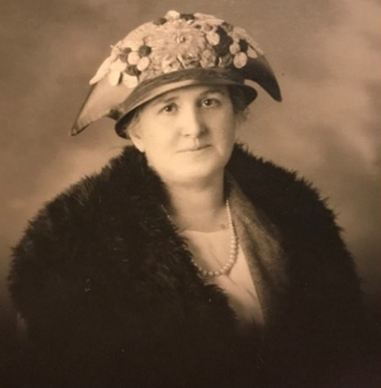
– sister to Pte Henry Gardner 1887-1916
Coincidentally, I had begun researching my family tree 12 months earlier but had not yet explored my mother’s branch of the family, only my father’s. So, with this enquiry from Australia as a prompt, I started to investigate my great-grandmother’s family and discovered that Henry Gardner was one of six brothers to Elizabeth. Henry, a bachelor, had named Elizabeth as his next of kin when he enlisted in the AIF as their mother had died in 1911 and father in January 1915.
Living in England I was initially rather skeptical about the information I had received as I had never heard of a Battle of Fromelles in WW1 or the Fromelles Association of Australia so started to investigate. Yes, there was a battle and yes, there was an association.
Satisfied there was some merit to this request, I replied to the letter and Ann explained about the investigation into identifying soldiers who had died in the Battle of Fromelles and had previously been placed in a mass unmarked grave by the German Army which was discovered in 2010 by Lambis Englezos. The German Army had collected then returned the ID tags from each of the soldiers. The task was now to try to identify each of the soldiers.
For me, giving a DNA sample, as part of the identification process, was a no-brainer after all the work Ann had undertaken and the connections with Fromelles. It would be wonderful if Henry could be identified and closure made for our great-grandmother. I was hooked – there was a family mystery to be solved!
Finding connections
Working together, Ann and I tried to find a male donor as this would increase the likelihood of identification, but I was struggling as I had no connections with any other relative on this line. Fortunately, Ann found a descendant of one of Henry’s brothers. Coincidentally, this descendant lived only 10 miles away from us in Lancashire and he agreed to donate his DNA. My sister and I met, one evening, with the sister of the male donor, armed with lots of photos and plenty of stories from each side of the family.
We also discovered another connection when we realized that the church in Dunsop Bridge that Sue’s daughter had chosen for her 2015 wedding service was the one where Henry was baptized. His baptism was recorded in the parish of Bowland Forest High near the villages of Whitewell and Dunsop Bridge; the wedding reception was held in Whitewell. In Henry’s time, these villages were in the county of Yorkshire but with border changes they are now in Lancashire – a beautiful and remote part of the North West of England. The coincidence is all the more startling as the current generations were unaware that their forbears had called this area home.
Henry’s Story
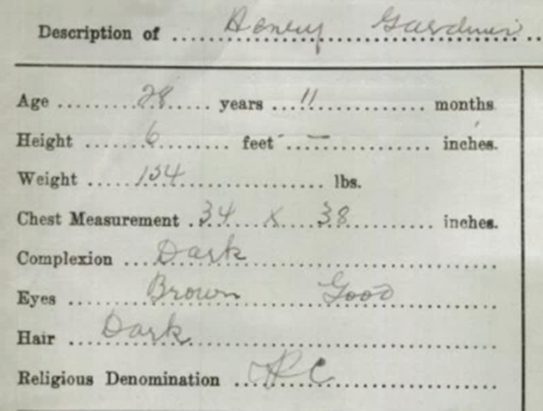
Census records show that Henry began work early as a labourer in the Lancashire cotton industry. He is shown as living with his family until the 1911 census but is believed to have emigrated to Australia shortly after that time. Perhaps the death of his mother in late 1911 was a catalyst for change. Whatever the reason, Henry arrived in New South Wales in his mid-twenties and found work as a hospital attendant at the Parramatta Hospital for the Insane outside Sydney.
Records show that Henry enlisted in July 1915 in Liverpool, New South Wales aged 28 years and 11 months. We have no photos of Henry but the description on his medical examination certificate on enlistment states that he was dark in colouring with brown eyes and quite tall for the era standing at 6 feet and weighing in at 11 stone or 70 kilograms. So, he was tall, dark and presumably handsome!
His next of kin was his elder sister, Elizabeth Anne Ashton, of Walton-le-Dale, Preston, Lancashire. Elizabeth was the eldest and only girl of the seven Gardner children. Henry was the second youngest so it is likely that Elizabeth had a hand in helping with his upbringing prior to her marriage in 1900.
From field service records, Henry disembarked HMAT Beltana at Suez in Egypt on 11 December 1915 where he would have joined Gallipoli veterans and new recruits in training. In June 1916, he left Egypt with D Company, 30th Battalion arriving in Marseilles on 23 June before travelling across France to reach the trenches of the Western Front.
According to the Australian War Memorial, “…the 30th Battalion's first major battle was at Fromelles on 19 July 1916. It was tasked with providing carrying parties for supplies and ammunition but was soon drawn into the vicious fighting.” This sets the context for Henry’s death, described so clearly by his comrade, Private George Whitfield, service number 1012, in evidence given to the Red Cross:
Informant states that on 19th July at 9 or 9.30 pm at Fleurbaix Pte Harry Gardner was killed. He was one of a reserve Coy going up with supplies over open ground which was being shelled. The Germans sent up a flare and our men lay down. A shell came over and burst in front of them, killing Gardner. Informant spoke to him, he was very badly hit and cannot have lived long. Informant saw him again after he had died. They were great friends. He knew Gardner very well indeed. He came from England. Informant believes he has a sister living at St. Helens in Lancashire, but is not sure of that. Gardner’s allotments were paid into a bank in Sydney. Informant believes it to have been the Commonwealth Bank.
It is clear from the details that George was able to provide that he knew Henry well. Service records show that George and Henry both enlisted in Liverpool around the same time, were both allocated to the 30th Battalion and both left Australia on the Beltana so there was ample opportunity for a friendship to develop.
Charles Bean, Australian World War 1 correspondent and historian, described the dangers and risks of those tasked with carrying supplies at Fromelles as follows.
For Henry, the carriage of supplies proved dangerous, burdensome and deadly.
The German Death List
As we now know, for many of the soldiers who died at Fromelles, their identification discs were collected from them by the German Army before burial in a mass grave. There were 250 soldiers buried in the Fromelles gravesite and, with more than 1300 missing after the battle, the German records were a key focus area for researchers as those named had a greater chance of being buried at Pheasant Wood. With Henry’s name appearing amongst the 190 names on the German Death List, the impetus increased for Ann and Sue to continue their efforts towards DNA identification.
Henry’s disc was duly recorded by the German Army and handed over by the Intelligence Officer with 6th Army HQ on 12 October 1916. It was eventually delivered to Elizabeth as next of kin on 14 May 1917.
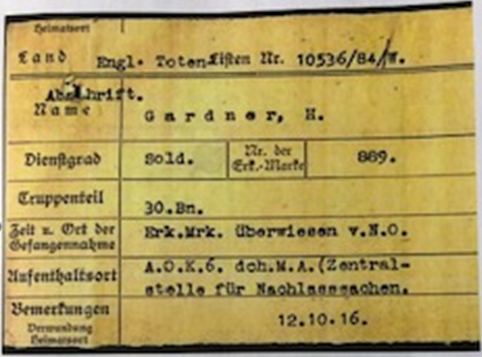
It was in 1920 that Elizabeth replied to Base Records Office to explain that she did not know where Henry had been killed and only knew that it was in No Man’s Land and the grave had not been registered. How difficult and heart-breaking must it have been to accept for the family? But Henry, of course, was not unique. Hundreds and thousands of young men suffered the same fate. Our family many years later have been so lucky to now know Henry’s story.
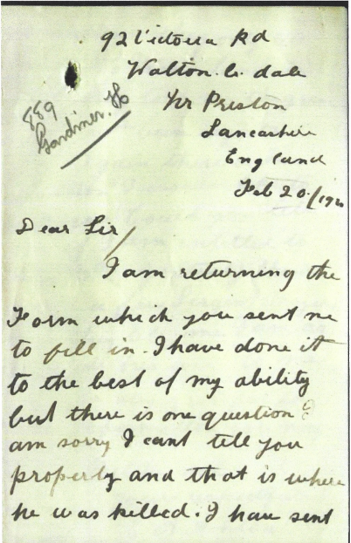
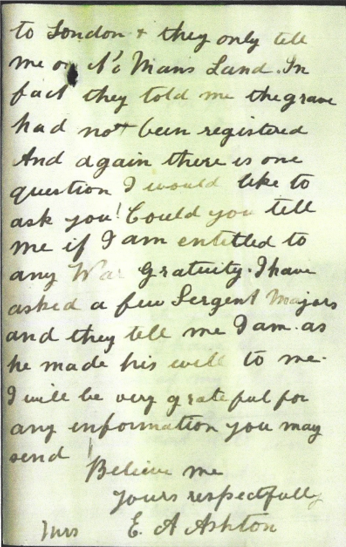
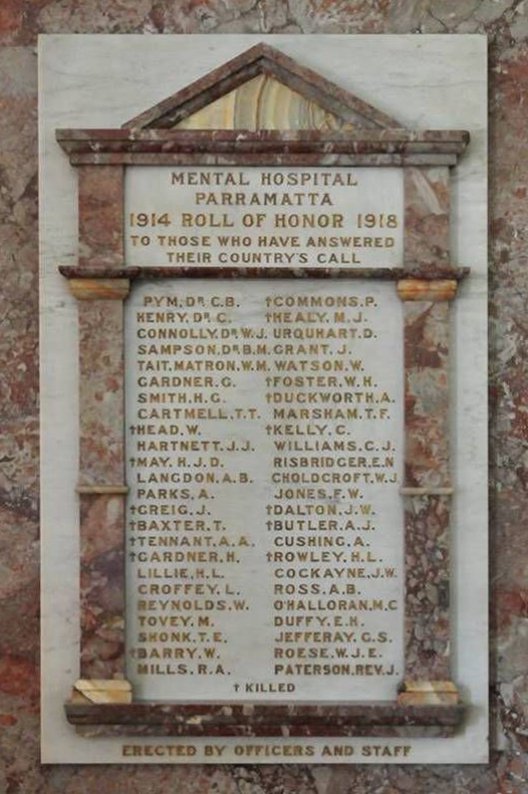
Hearing of Henry’s death, the Inspector-General of the Insane from Parramatta Hospital, Sydney (where Henry was a hospital attendant) wrote to the Officer in Charge, Base Records office, Melbourne asking for date of death. He recognized Henry as a kind man and his name is listed on the hospital’s World War 1 Roll of Honour.
The Fromelles Association would love to hear from you

Contacts
(Contact: carla@fromelles.info or geoffrey@fromelles.info).
(Contact: army.uwc@defence.gov.au or phone 1800 019 090).
Donations
If you are able, please contribute to the upkeep of this resource.
(Contact: bill@fromelles.info ).
